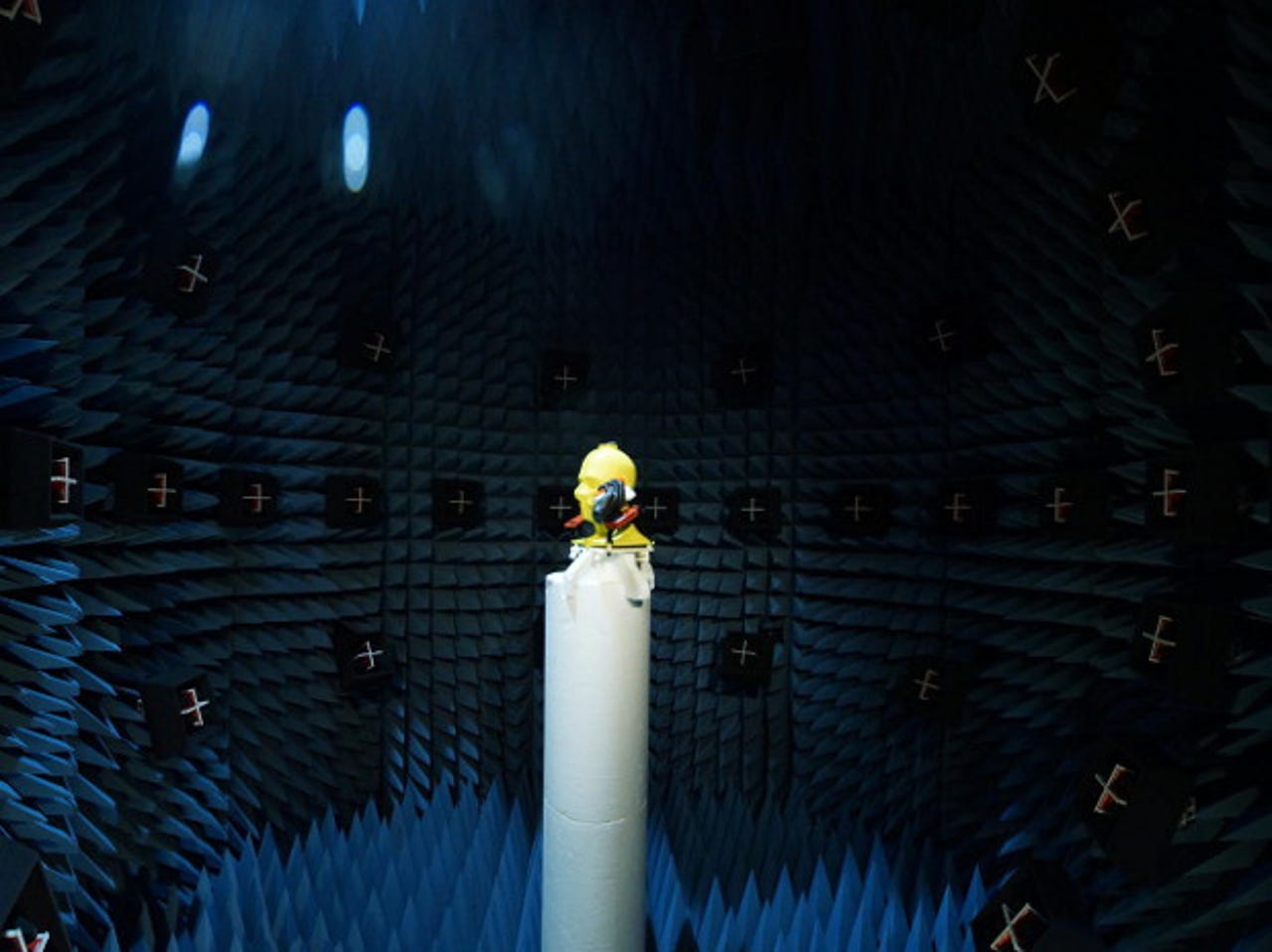Wireless wonderland: Finnish startup buys Microsoft test chambers to drive future of wi-fi and 5G


It's exactly the kind of challenging radio environment that the Finnish startup Verkotan can recreate. It specialises in wireless performance testing using over-the-air (OTA) test chambers to measure how mobile phones, wearables, and other wireless devices perform in real-life conditions.
"We use scanners to determine where direction radio signals arrive at a certain location, for example a street in London, and how strong the signals are. That data is then used to create the same environment in the test chamber and the network will be very similar to the one on the street," Jani Kallankari, chief scientist at Verkotan, said.
Roots in Microsoft and Nokia
Verkotan was only officially founded in November last year, but it's been quick to take off thanks to its roots in Microsoft and Nokia. Its six-member team has a long history of working with OTA testing and wireless performance at both companies, and when Microsoft last year announced it was closing the former Nokia R&D unit in Oulu, Northern Finland, Verkotan saw an opportunity. Its founders recognised the demand for OTA testing services and in January it signed a deal with Microsoft to buy its mobile equipment testing laboratories.
Now Verkotan has facilities to match its expertise, with four testing chambers totalling 1,100 cubic meters, and the acquisition (for an undisclosed amount) also includes software licensing and equipment.
OTA testing is a meticulous art and among Verkotan's more curious tools are mock hands and moulded human heads.
"Measurements are done in all different positions like on a table, in hand and by an ear to see that a device's antenna is good enough," explains Kallankari. "Modern mobile phones have a vast number of frequencies as well so there are lots of possible combinations to test which is challenging."
Equipped with its new facilities, Verkotan claims to be the only accredited OTA testing service provider in Northern Europe and offers both OTA certification tests and tailored wireless performance testing using its inhouse software. Certification tests, which are a requirement for different wireless industry certifications like The Global Certification Forum (GCF) and PTCRB, are targeted for cellular systems, wi-fi, and A-GPS. Furthermore, many mobile operators set their own requirements for device performance which manufacturers have to meet.
Tailored tests cover almost any radio system from cellular radios and standalone GPS to Glonass and Bluetooth.
"We have the ability to tailor and swiftly develop OTA tests for our customers. We are very agile because we can adjust our in-house testing system according to our customers' needs. Instead of relying on getting the latest test software update from a supplier, we have our own software development capability," saysVerkotan CEO Kari Komonen.
OTA testing can be used to cater to the diverse needs of mobile and wireless equipment manufacturers, mobile network operators, and test equipment companies. The testing is typically done wirelessly in a controlled radiated environment (specifically an anechoic chamber) and is used to test wireless devices' reliability and performance in real-world conditions, covering both antenna and receiver performance. The aim is to accurately predict how a wireless device performs and the signal strength it requires to reduce problems like dropped calls and poor quality of service.
Next-generation multiple antenna testing
While OTA testing has been around since the early 21st century, demand for MIMO (Multiple-Input Multiple-Output) OTA testing has grown significantly in recent years.
MIMO technology is popular in routers and fast expanding to mobile devices because it can send and receive multiple data signals simultaneously on the same radio channel. This increases wireless speed and range without needing to increase bandwidth or transmission power.
Read this
Verkotan calls this its 3D Multipath MIMO Laboratory and it gets its name from testing 2x2 and 4x4 MIMO arrays (the number of antennas and equivalent number of supported independent data streams). "I haven't seen any public mentions of similar MIMO laboratories," says Kallankari.
"MIMO testing enables us to quickly see how a device performs and compare results," he continues. "Traditional OTA tests don't allow for realistic measurement of the true benefits of the new adaptive antennas. The worst case scenario is that these traditional tests show new technologies reduce wireless performance when it isn't true on the field. This can slow down the adoption of new technologies."
5G for the future
While MIMO expertise is Verkotan's focus in the short term, the company is also looking to 5G for the future. The 4G successor is some years away, but Verkotan is already investigating 5G performance research and potential partnerships and wants to be at the forefront of defining the standard.
"MIMO and 5G are potentially interesting for large customers and we are looking for partners in 5G research as it is starting to grow," explains Komonen. "There are EU projects related to 5G which we are interested in and in the future we would like to be involved in creating the standard for 5G."
But the immediate goal is scale. Verkotan is actively hiring in sales and software development to accelerate the growth of its test laboratory and participate in creating new industry test methods.
"Our long-term goal is to be the leading top quality test laboratory in wireless performance testing," says Komonen.
Read more on this story